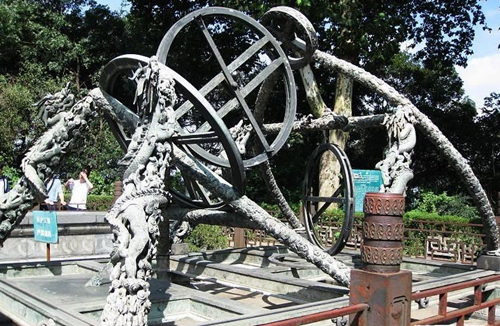Abridged Armilla

It was simplified and improved by Guo Shou-jing (1231-1316), on the basis of Armillary Sphere. It was used to measure both the equatorial and horizontal coordinates of celestial objects without interference caused by multiple rings. A sundial was added for time keeping during the day time. The instrument was made in 1437. It was looted to French Legation in 1900 when the Eight-Power Allied Forces invaded Beijing. It was sent back to China in 1905.
The primary structure of Abridged Armilla contains two large rings that are perpendicular to each other, of which one is parallel with the equatorial plane and is accordingly called “equatorial ring”, and the other is a double-ring which is perpendicular to the center of the equatorial ring, revolves around a metallic shaft, and is called “right ascension double-ring”. The double-ring holds within itself a sighting tube with crosshairs, which equals to a monocular and revolves around the center of the right ascension double-ring. During observation, the sighting tube is targeted at a certain star, thus the positional value can be read out at the dials of the equatorial ring and the right ascension double-ring. Two stands are supporting the metallic shaft at the position south-north direction, bracing the entire observing unit to a position that the north part is higher than the south part.